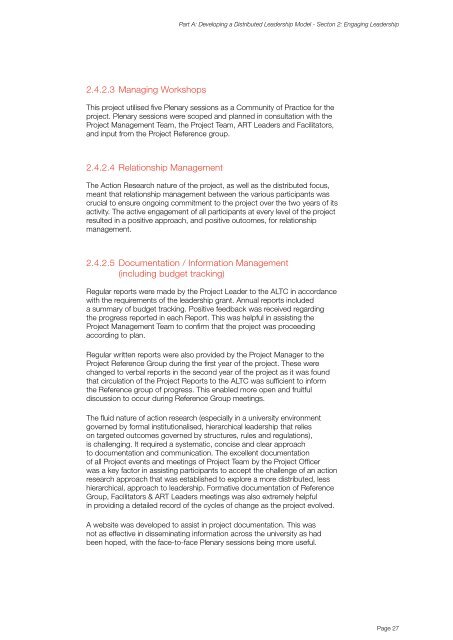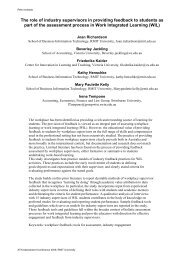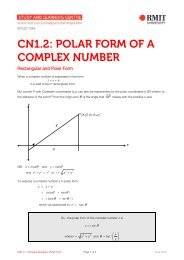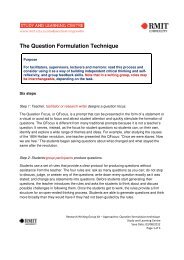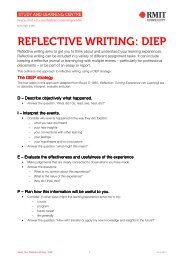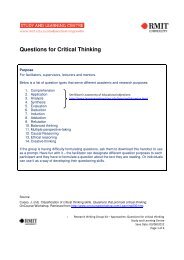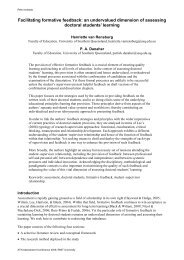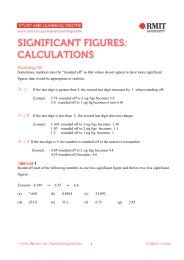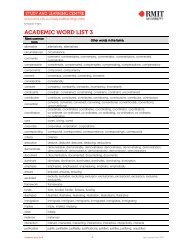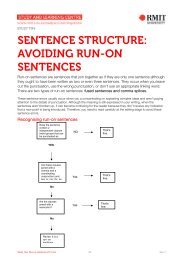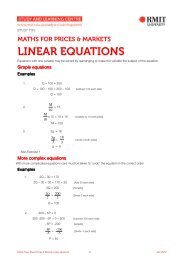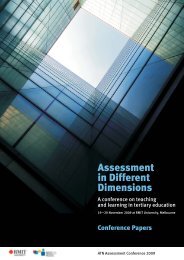student feedback and leadership - Office for Learning and Teaching
student feedback and leadership - Office for Learning and Teaching
student feedback and leadership - Office for Learning and Teaching
You also want an ePaper? Increase the reach of your titles
YUMPU automatically turns print PDFs into web optimized ePapers that Google loves.
Part A: Developing a Distributed Leadership Model - Secton 2: Engaging Leadership<br />
2.4.2.3 Managing Workshops<br />
This project utilised five Plenary sessions as a Community of Practice <strong>for</strong> the<br />
project. Plenary sessions were scoped <strong>and</strong> planned in consultation with the<br />
Project Management Team, the Project Team, ART Leaders <strong>and</strong> Facilitators,<br />
<strong>and</strong> input from the Project Reference group.<br />
2.4.2.4 Relationship Management<br />
The Action Research nature of the project, as well as the distributed focus,<br />
meant that relationship management between the various participants was<br />
crucial to ensure ongoing commitment to the project over the two years of its<br />
activity. The active engagement of all participants at every level of the project<br />
resulted in a positive approach, <strong>and</strong> positive outcomes, <strong>for</strong> relationship<br />
management.<br />
2.4.2.5 Documentation / In<strong>for</strong>mation Management<br />
(including budget tracking)<br />
Regular reports were made by the Project Leader to the ALTC in accordance<br />
with the requirements of the <strong>leadership</strong> grant. Annual reports included<br />
a summary of budget tracking. Positive <strong>feedback</strong> was received regarding<br />
the progress reported in each Report. This was helpful in assisting the<br />
Project Management Team to confirm that the project was proceeding<br />
according to plan.<br />
Regular written reports were also provided by the Project Manager to the<br />
Project Reference Group during the first year of the project. These were<br />
changed to verbal reports in the second year of the project as it was found<br />
that circulation of the Project Reports to the ALTC was sufficient to in<strong>for</strong>m<br />
the Reference group of progress. This enabled more open <strong>and</strong> fruitful<br />
discussion to occur during Reference Group meetings.<br />
The fluid nature of action research (especially in a university environment<br />
governed by <strong>for</strong>mal institutionalised, hierarchical <strong>leadership</strong> that relies<br />
on targeted outcomes governed by structures, rules <strong>and</strong> regulations),<br />
is challenging. It required a systematic, concise <strong>and</strong> clear approach<br />
to documentation <strong>and</strong> communication. The excellent documentation<br />
of all Project events <strong>and</strong> meetings of Project Team by the Project <strong>Office</strong>r<br />
was a key factor in assisting participants to accept the challenge of an action<br />
research approach that was established to explore a more distributed, less<br />
hierarchical, approach to <strong>leadership</strong>. Formative documentation of Reference<br />
Group, Facilitators & ART Leaders meetings was also extremely helpful<br />
in providing a detailed record of the cycles of change as the project evolved.<br />
A website was developed to assist in project documentation. This was<br />
not as effective in disseminating in<strong>for</strong>mation across the university as had<br />
been hoped, with the face-to-face Plenary sessions being more useful.<br />
Page 27


